Riding the Kona Libre multisurface bike on Madeira
Some challenging terrain to show off Kona’s new carbon machine
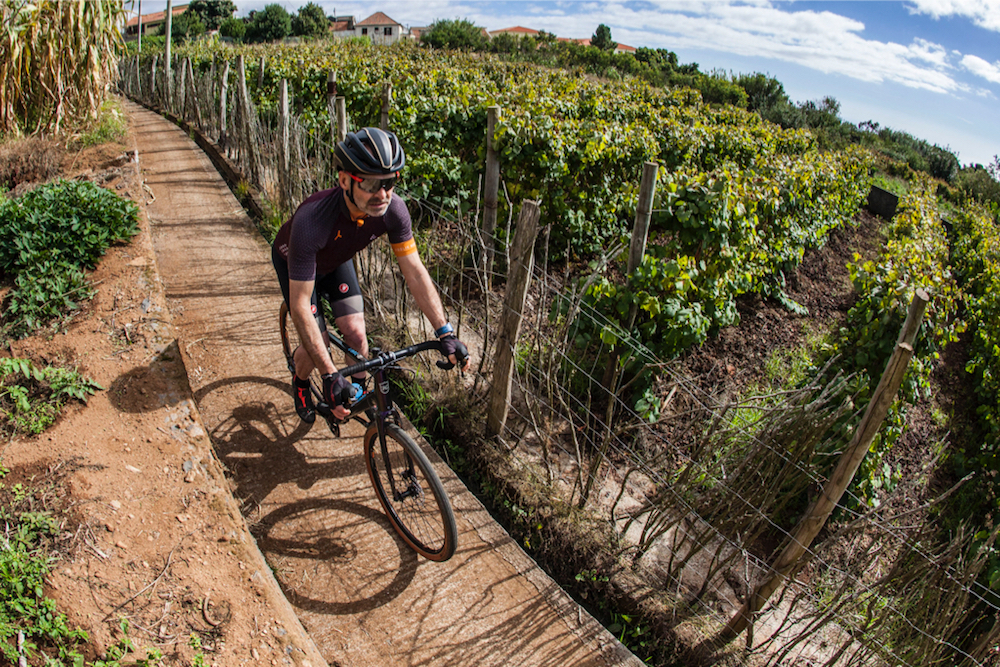

Kona announced the new Libre back in August, with Kona-sponsored world solo 24 hour MTB champion Cory Wallace riding the bike at the 200 mile Dirty Kanza gravel bike race in early June.
Wallace finished Dirty Kanza in 14th place, despite a succession of flats, which meant that he needed to come back from hundreds of places down the field. There’s a link to the story of his ride here.
Now we too have ridden the bike at the European launch event on Madeira.
Kona says that the Libre is designed to sit between its Rove, geared to riding smoother surfaces, and the Sutra, its classic rugged touring bike with huge clearances.
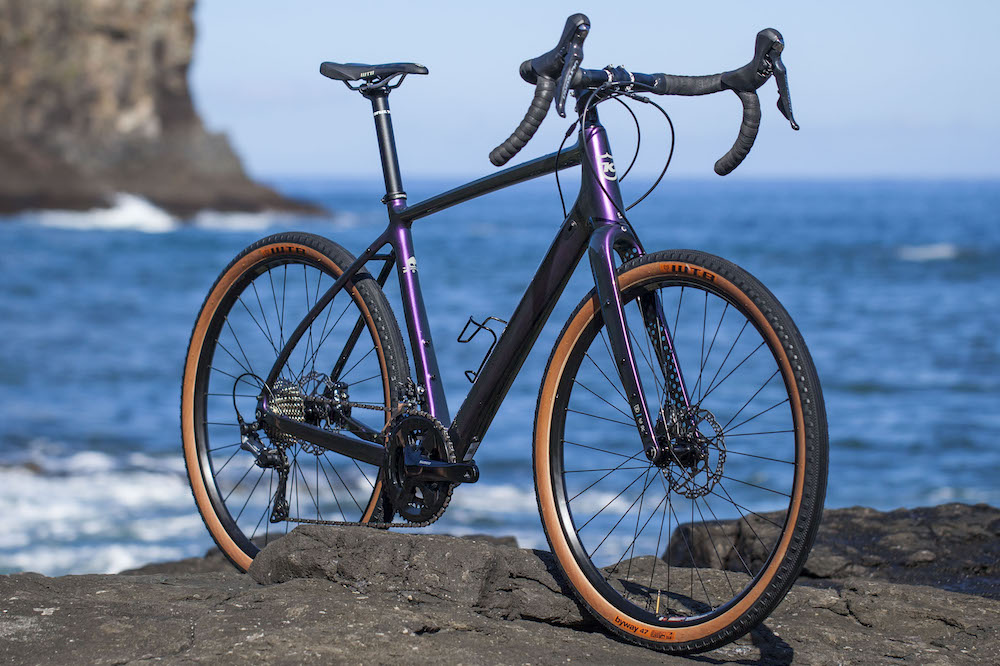
Whereas those two bikes have alloy or steel framesets, the Libre is a carbon bike., designed to take 650b or 700c wheels, 1x or 2x groupsets and as many accessories as you care to bolt onto the frame.
The sloping geometry allows plenty of standover and you can fit a dropper post with internal cable routing. It’s worth noting that Kona sizes its frames by seat tube length, so the numbers come out lower than you’d normally ride.
Kona’s geometry includes a long head tube and short stem. That’s great for riding both on and off road descents in the drops and coupled to the flared bars gives you lots of control. It also gives plenty of space to fit a bar bag.
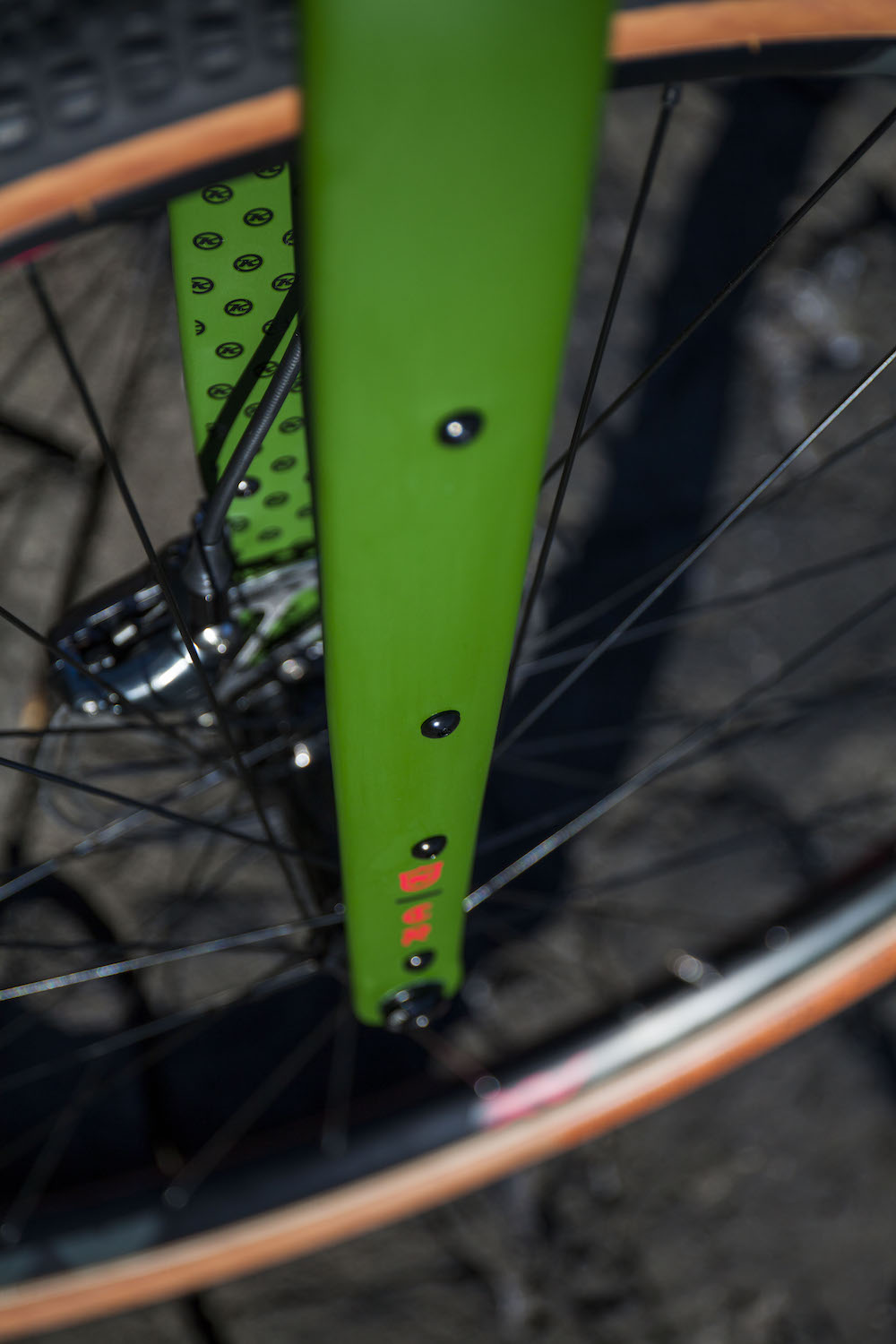
The Libre frameset is paired with Kona’s new Verso Carbon Touring fork, which is designed with three sets of mounts to accept mudguards as well as a front rack for heavy duty bikepacking. It’s one of the few carbon forks out there that has this degree of versatility.
Kona stresses that the mounting points are solid blocks of aluminium that pass right through the fork blades, rather than just rivets in the carbon, so they’re strong enough to cope with being loaded up and bumped around off road.
On the frame itself, you get top box mounting points, three sets of bottle bosses on the down tube and one on the seat tube. Kona reckons you could carry a gallon of water with you if you were heading out into the desert.
Kona offers the Libre as a base model with a Shimano two ring drivetrain, using the Shimano Ultegra RX clutched rear mech for excellent off-road shifting. The compact chainset is paired to an 11-34 cassette; Kona says it always looks to provide a 1:1 or lower bottom gear on its machines for heavy hauling off road.
Priced at £2899, the Libre comes with WTB 650b wheels and WTB Byway 47c tyres. There’s room for mudguards too.
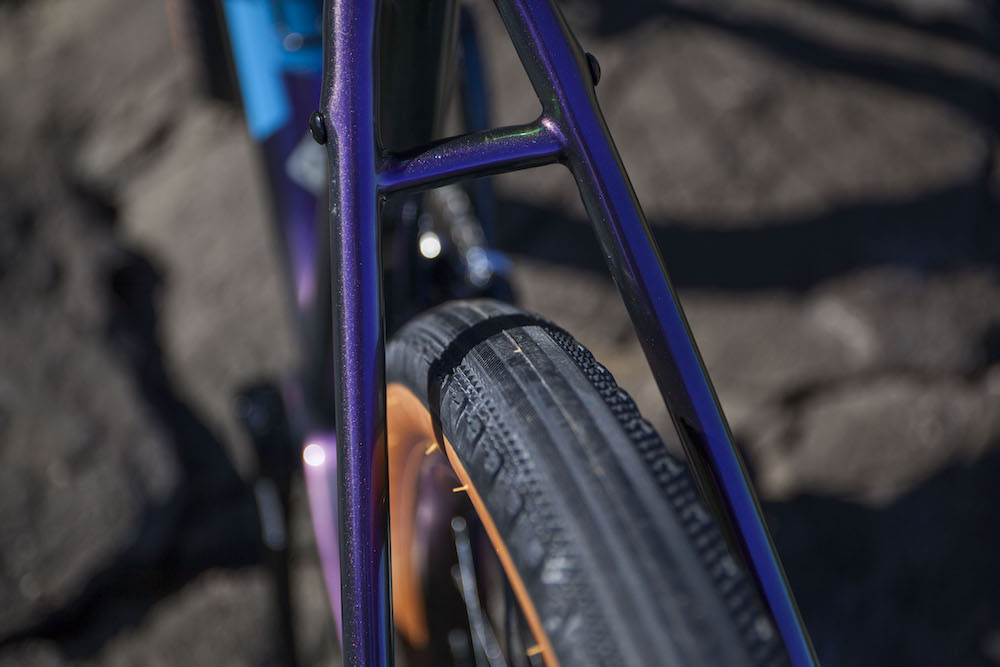
The tyres look deceptively slick and roll fast on tarmac on their mixed smooth and herringbone central tread. But the edges of the tread have a file tread that actually grips really well on softer surfaces. And you get side knobs for extra traction when things get really muddy.
The Libre comes in a pearlescent purple which catches the light differently at different angles and looks really fly.
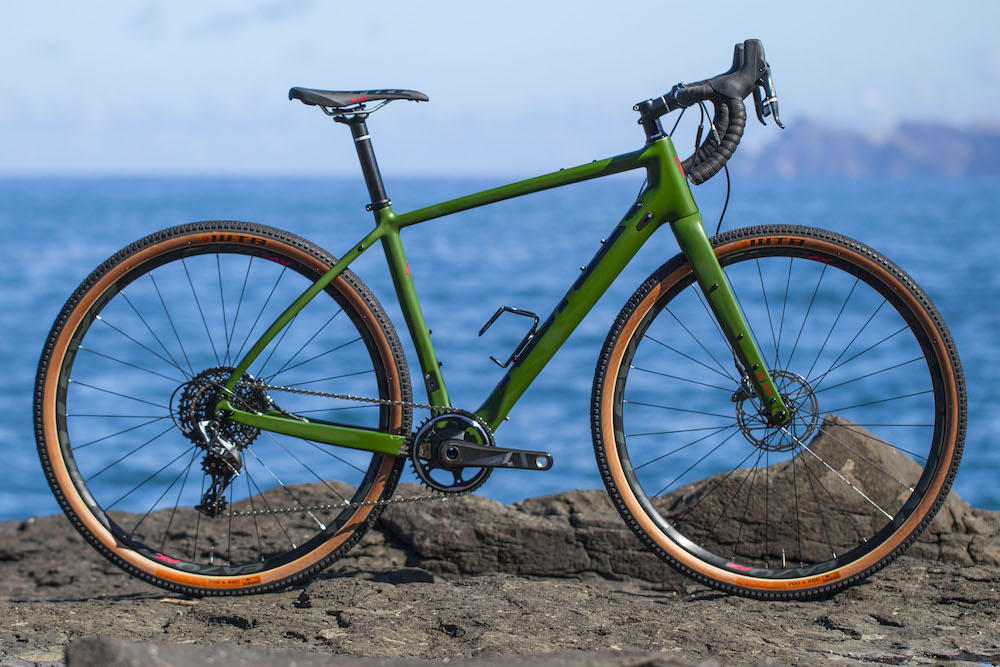
Move up to the £3699 Libre DL, which comes in Military Green, and you get 700c Easton wheels with WTB Riddler 45c tyres. They’ve got a more traditional knobbed tread with larger knobs on the sides than the crown. The groupset is SRAM Force 1 with a 40 tooth chainwheel and 10-42 cassette.
Riding the Kona Libre
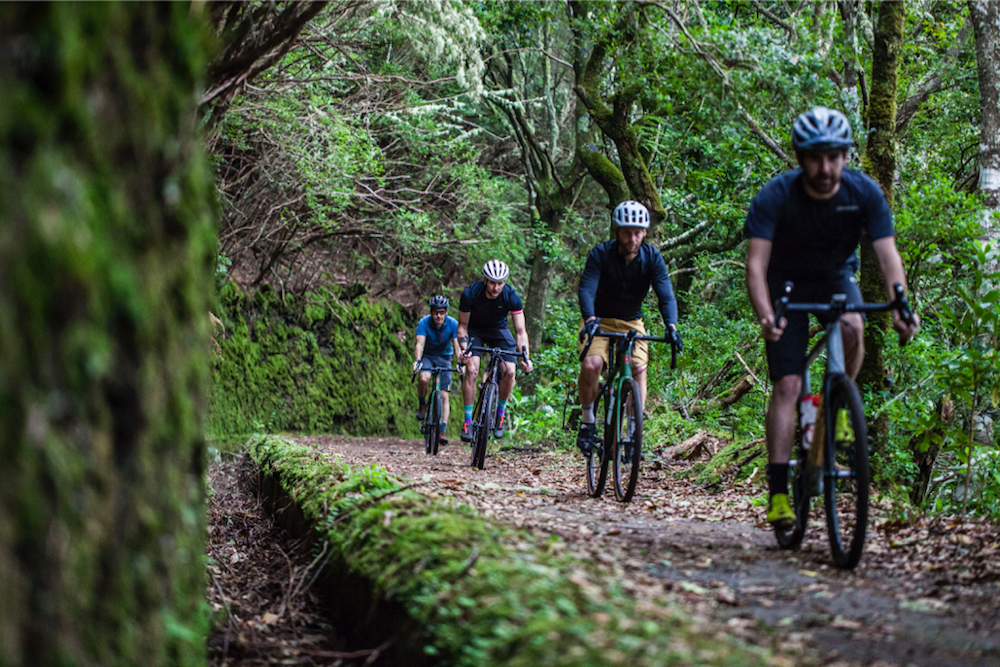
At the launch, we rode a variety of terrain on the base model Libre. We started off riding through the eucalyptus forests, following one of Madeira’s levadas, irrigation channels dug into the side of the mountain to bring water to cultivated areas. In the afternoon, we rode some more challenging off road descents on the west of the island, culminating in a spectacular tunnelled road down to the coast.
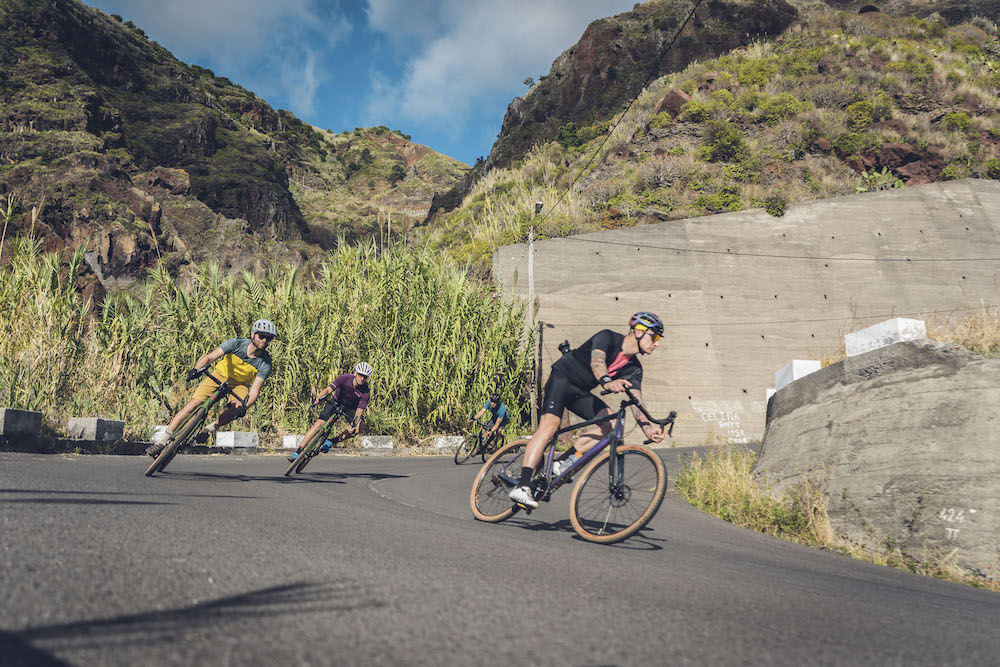
On the next day, we took the three hour ferry ride to the island of Porto Santo. Lower than Madeira, it’s much drier, offering some great riding on gritty surfaces as well as steep on-road climbs and fast, flat tarmac along the south coast. We still packed 1000m of climbing into a 40km ride.
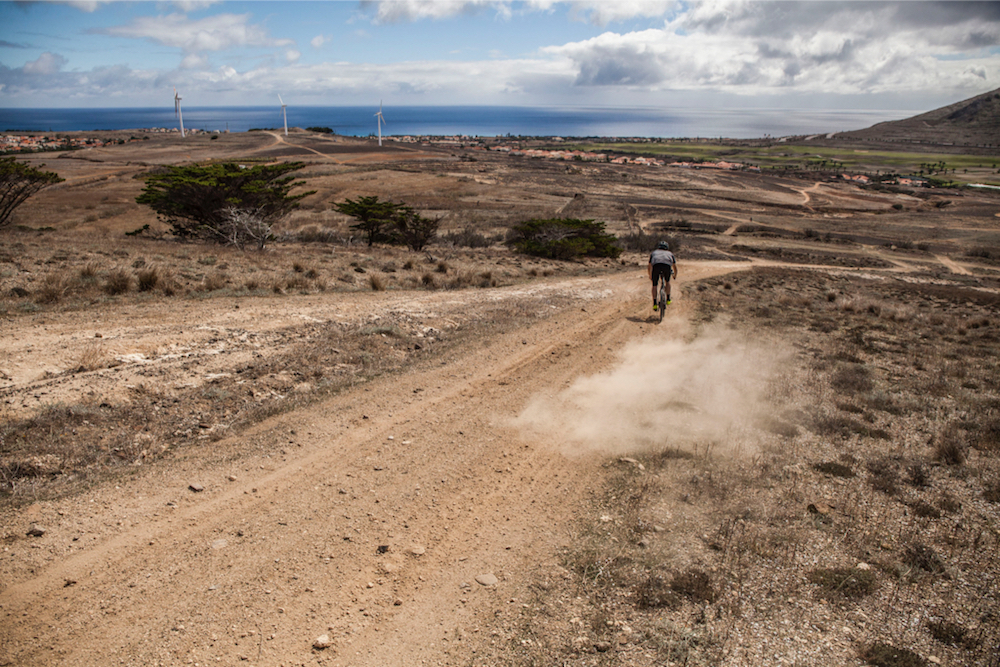
Even on the semi-slick WTB Byway tyres, the Libre proved a confident companion, handling the damp mud and dry gravel equally effectively. There’s the lower range to tackle steep, loose climbs off road while staying in the saddle. The higher ride position leads to good visibility of obstacles and good weight distribution.
On winding tarmac descents, it’s easy to ride in the drops and see your line through the hairpins, while the Libre rolled fast on the few flat pieces of tarmac we found.
We were impressed by the Libre: it’s one of the most versatile and well sorted gravel bikes we’ve ridden.

Thank you for reading 20 articles this month* Join now for unlimited access
Enjoy your first month for just £1 / $1 / €1
*Read 5 free articles per month without a subscription

Join now for unlimited access
Try first month for just £1 / $1 / €1
Get The Leadout Newsletter
The latest race content, interviews, features, reviews and expert buying guides, direct to your inbox!
Paul started writing for Cycling Weekly in 2015, covering cycling tech, new bikes and product testing. Since then, he’s reviewed hundreds of bikes and thousands of other pieces of cycling equipment for the magazine and the Cycling Weekly website.
He’s been cycling for a lot longer than that though and his travels by bike have taken him all around Europe and to California. He’s been riding gravel since before gravel bikes existed too, riding a cyclocross bike through the Chilterns and along the South Downs.
-
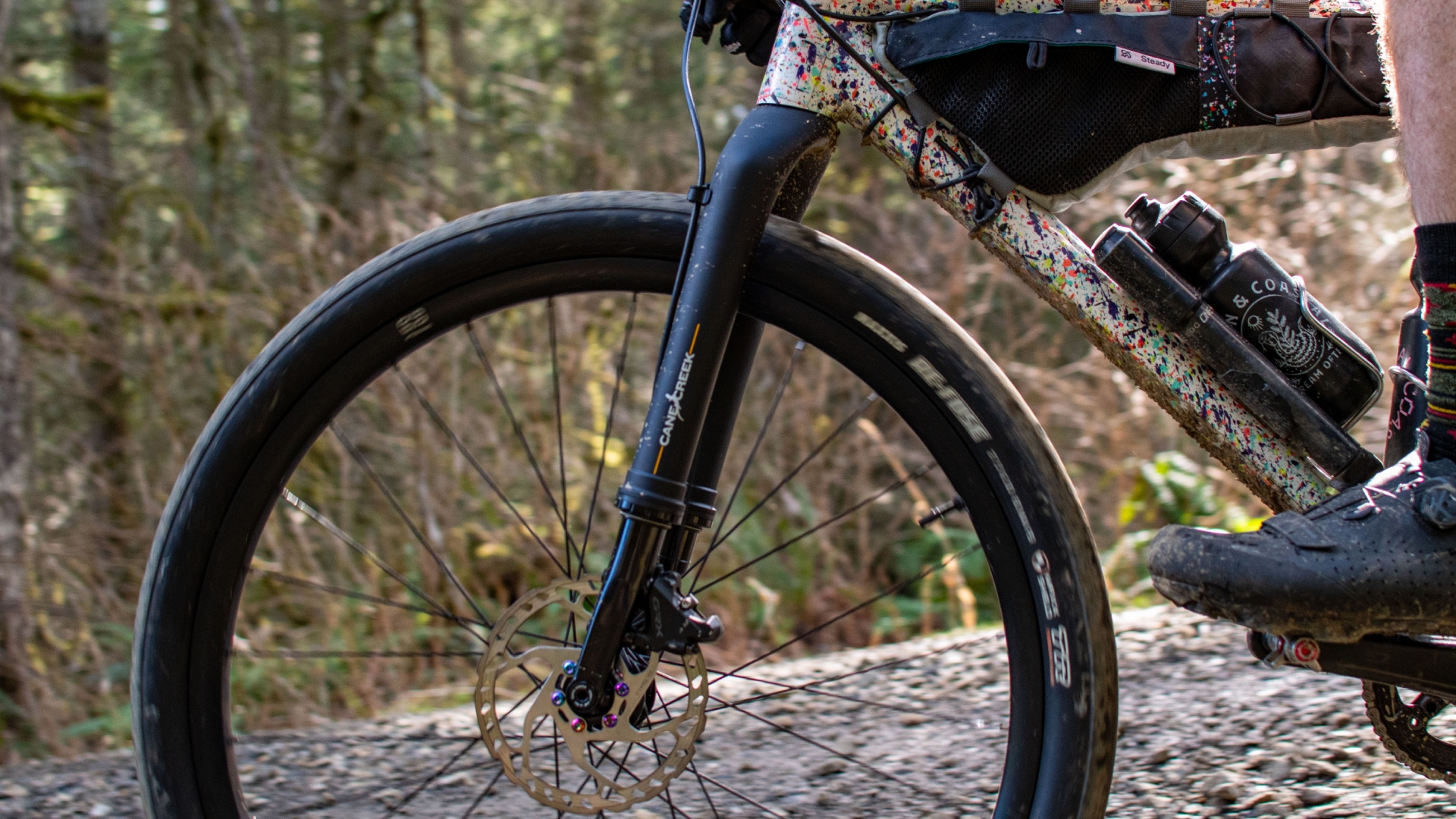 Review: Cane Creek says it made the world’s first gravel fork — but what is a gravel fork, and how does it ride?
Review: Cane Creek says it made the world’s first gravel fork — but what is a gravel fork, and how does it ride?Cane Creek claims its new fork covers the gravel category better than the mini MTB forks from RockShox and Fox, but at this price, we expected more.
By Charlie Kohlmeier
-
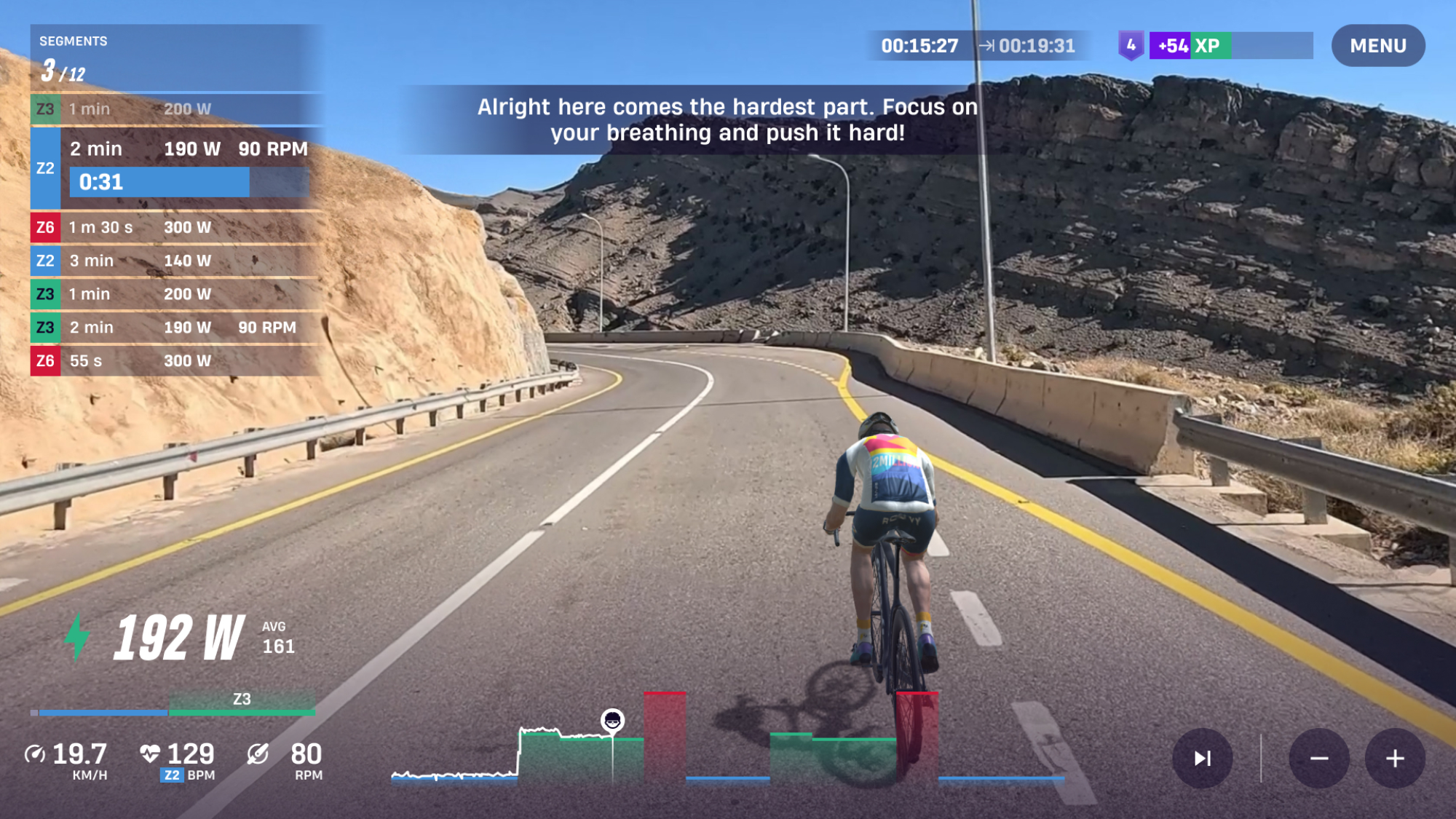 ROUVY's augmented reality Route Creator platform is now available to everyone
ROUVY's augmented reality Route Creator platform is now available to everyoneRoute Creator allows you to map out your home roads using a camera, and then ride them from your living room
By Joe Baker